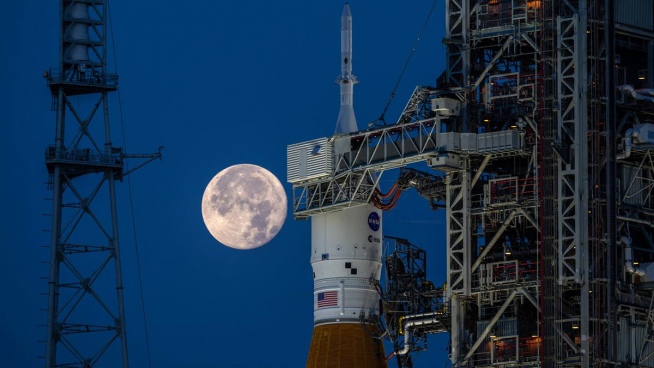The launch of the Artemis I mission rocket, the most powerful ever built, which was scheduled to take place today to the Moon was canceled, NASA reported.
“The launch of #Artemis I will no longer take place today, as the teams are working on an issue with an engine bleed,” the US agency reported through its Twitter account.
“Teams will continue to collect data and we will keep you updated on the timing of the next launch attempt,” it added.
Fifty years after the last Apollo flight, the Artemis 1 mission will mark the launch of the US program to return to the Moon, and which could then make it possible to go to Mars aboard the same spacecraft.
The unmanned Orion capsule will be put into orbit around the Moon to make sure it is safe for future astronautswhich will include the first woman and the first black person to step on the lunar surface.
The countdown clock is stopped at T-40 minutes. The hydrogen team @NASA_SLS is discussing plans with the launch director of #Artemis YO. https://t.co/37lysgrEZ7
— NASA in Spanish (@NASA_es) August 29, 2022
“This mission carries with it the dreams and hopes of many people,” said NASA chief Bill Nelson.
“Now we are the Artemis generation,” he added, according to the AFP news agency.
In the second stage, Artemis 2 -no date yet- will be manned, but the astronauts will not leave the ship. Later, Artemis 3 will carry the first woman and the first person of African descent.
Takeoff is scheduled for 8:33 local time (9:33 in Argentina) from Launch Pad 39B at the Kennedy Space Center.
The weather forecast is 80% favorable to meet the launch on time, whose takeoff window is two hours.
At 98 meters tall, the orange and white SLS rocket will not be able to take off in rain or thunderstorms.
From Sunday night to Monday morning, more than three million liters of liquid hydrogen and oxygen supplied the fuel tanks.
Who will give the green light definitive will be Charlie Blackwell-Thompson, the first woman to direct a launch at NASA.
Women represent 30% of the workforce within the launch room, in contrast to Apollo 11, where only one woman participated.
Two minutes after launch, the boosters will return to Earth to drop into the Atlantic.
Eight minutes later, the main segment will separate, and about an hour and a half later, one last push will send the capsule headed for the Moon, where It will take several days to arrive.
It is estimated that between 100,000 and 200,000 people will attend the launchincluding the US Vice President, Kamala Harris.









